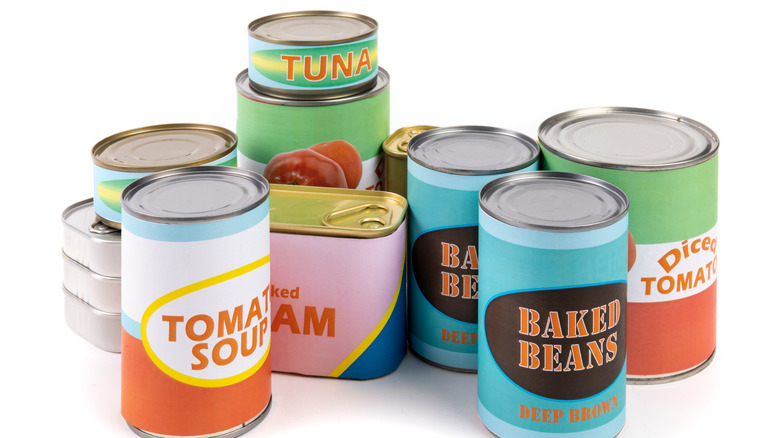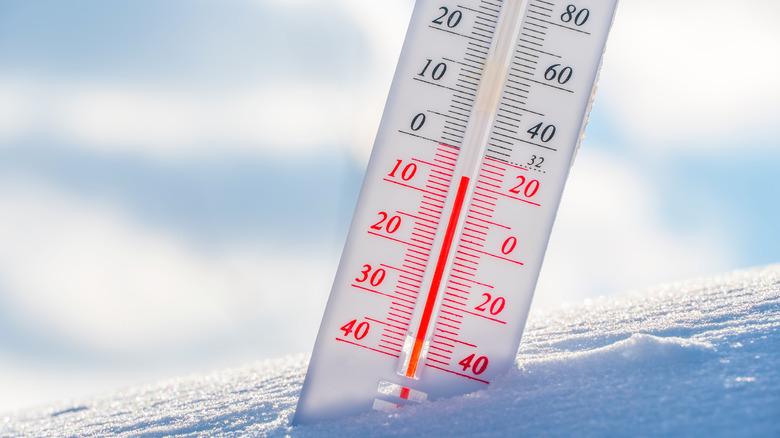What You Need To Know If Your Canned Goods Are Mistakenly Frozen
There are no shortage of reasons why you should always have canned goods on hand. Aside from boasting an incredibly long shelf life, these tinned foods are also affordable and offer convenience. Likewise, they can also preserve seasonal flavors and provide nearly the same level of nutrients as fresh or frozen fare. Although canned goods offer so many benefits, there are a few pieces of advice when it comes to handling tins that have accidentally been frozen.
Since the COVID-19 pandemic, Quartz reports that canned foods — along with other canned cargo — have been flying off shelves so quickly that we now face an aluminum shortage. That said, it's always wise to stock up on a few essentials whenever you stop by the grocery store. Some of the most versatile and tasty tinned products to add to your emergency stockpile include soups, beans, tuna, tomatoes, and fruits.
As for where these goods should be kept, the University of Minnesota advises keeping canned goods away from direct sunlight and opting for a dry and cool area, ideally between 50 degrees F to 70 degrees F, to avoid freezing. If, however, the unthinkable happens and cans are mistakenly exposed to subzero temperatures either by being kept in the garage, basement, or forgotten in the car, here's what you need to know.
Cans may still be usable, but not always
Cans that have been processed incorrectly may contain deadly, botulism-causing bacteria. While Healthline states that the risk is greater for home-canned goods, that doesn't mean that commercially-produced tins are free of risk, especially if they're stored improperly, say in frosty locations. Naturally, cans that have been mistakenly frozen carry a certain level of risk.
According to Primal Survivor, most canned goods like vegetables or tuna contain a high concentration of liquid that can expand as temperatures dip, causing cans to swell. With this swelling, the seal on tinned goods can also be compromised, resulting in food being at a greater risk of exposure to bacteria that cause a variety of foodborne illnesses, including botulism. However, not all cans that have been mistakenly frozen may have a broken seal.
If the seams haven't burst or rusted — a damaged can should be wrapped in a plastic bag and immediately thrown away – and you're extremely certain that a can is swollen due to being frozen, then the USDA explains that the can may still be safe to eat. That said, Best Life states that the cans should be left to thaw in the fridge, whereas cans that have thawed on their own at 40 degrees F or warmer should be discarded as these temperatures can cause bacteria to flourish. Consequently, any thawed cans should not be refrozen.

